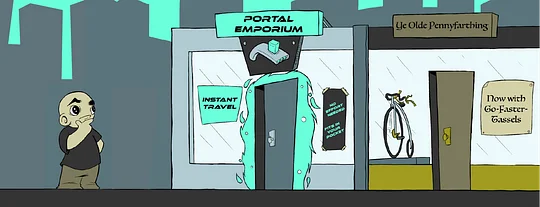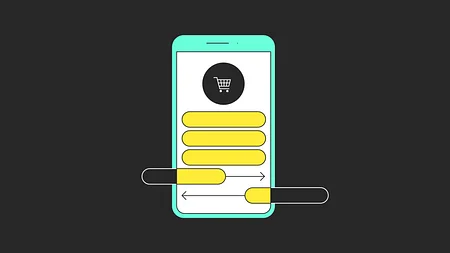‘Disruption’ for the home

You can’t help but have noticed how ‘disruption’ has become a firm favourite in the new financial services lexicon. But what does it really mean?
The very word is shorthand for discomfort. And humans are not good with discomfort: we are biologically and sociologically conditioned to strive towards restoring comfort and safety.
When speaking about disruption brought about on the advent of digital technology, then, we are talking about seasoned professionals looking on as a phenomenon that is sweeping in impact, ever-evolving in nature and unknown in its specifics is closing in on them at full speed.
It is big and it is scary.
So big in fact that the first reaction is to home in on the aspect of the oncoming change that looks more manageable. When banks look at digital disruption, they tend to focus on the technology because there is a box named technology in their head, and a floor named technology in their building, and if you give it a shape that you recognize, it's easier to handle. But in regaining comfort, you lose nuance and you may lose the bigger picture.
‘Digital’ is not technology, it is not an app. Is it the human experience re-imagined.
Digital disruption confronts banks set up in an analogue world to maximise efficiency around a value chain that is increasingly challenged and based on technology that is increasingly obsolete. They are, whichever way to look at it, not fit for purpose.
So the hardest question posed by the digital era is ‘how much of your organisation can you afford to take into the future’? Not an easy question to stomach. Not an easy question to answer when personal, emotional and material investment blends with immediate pressures of work being done today, by people working hard today, doing what clients need today while keeping half an eye on a rather alarming ‘tomorrow’.
Building for a future not yet entirely known
Essentially the advent of the digital era removes friction, the in-between steps and processes that existed because there was no better way.
But what does that mean? The answer is very different depending on your starting point. User-centric design can produce radically re-imagined services offering seamless, non participatory, smooth exchanges. But in doing so, it may well be cutting you and your business out of the picture.
By extension, in trying to design for the digital era from the vantage point of an existing organisation desperately trying to write itself into the future, what is produced is often a slight improvement but a pale approximation of a digitally native experience.
In this version of the future organisations are smaller, leaner and much more digitised
Look at the Yellow Pages as an example. The idea that, to make a restaurant reservation, we would leaf through a book delivered periodically through the post and kept under a designated telephone spot in the household is fraught with quaint anachronism. The point was to go for dinner.
The digitisation of the experience didn’t recreate the process, it solved for the need: relevance. People went from searching the phone number and directly dialling the restaurant from a different device to directly dialling it from the same device, to actually making a reservation without speaking with a human. That is seamless.
But not the sort of seamless that you could or would imagine if you worked for the Yellow Pages. So when Yellow Pages finally digitised itself, it completely missed the point that it was an enabler in a process fit for a different era.
Increasingly, people like to participate as little as possible. The Uber model capitalises on this: there are things that have to happen to get you from A to B but you don’t need to participate in them all. You pre-agree to how the payment is going to work; you know when it's triggered; you know what it looks like; you know where your receipts are. You still pay, but it's a non-participatory experience.
If this value assessment grid is applied to banking we soon realise that it is a ‘so-that’ business. It is what we do in order to be able to do something else. You don't do it for fun, for the experience or as a hobby. You do it because you need credit, because you have investable assets, or because you need to hedge risk. It is a bridge to something else, and not the endgame.
From a brand awareness perspective, it's a very uncomfortable series of thoughts for a bank to say, “I will become the rails on which you live your life." However, if you translate that relationship of trust you have with your financial services to a trusted set of parameters that you pre-agree to and entrust them to, it creates new possibilities.
If I drive my car across international borders, pre-bought micro-insurance can kick in because my car's GPS and my GPS have alerted my insurer that I've left the country. And if I return in 12 hours, I can be insured for 12 hours.
As we imagine what seamless looks like, we are faced with the elimination of quite a lot of what makes banks money today
The future is coming faster than you think (or want)
None of this is science fiction. The technology exists. What we don't quite have is the organizational alignment to allow for people to wrap jobs and institutional awareness around ‘the art of the recently possible’. It's a journey, a transition.
All the services currently being consumed can be integrated without people needing to call each other. It's an easier, cheaper, more personalized experience for the consumer. It brings you as a consumer closer to whatever it is you are trying to do and your banking insurance partner are still your partners.
However, in this version of the future the organisations are smaller, and leaner, and much more digitised. It also means that what a lot of the departments that currently exist will probably look very different.
So as we imagine what seamless looks like, we are faced with the elimination of quite a lot of what makes banks money today, quite a lot of what they spend long and busy days doing.
Solving for the question of ‘who owns the customer’ is less important than who the customer is and why they are a customer. ‘User journeys’ and ‘customer centric design’ are not simply concepts: the business needs to understand their usefulness, not just the mechanics.
As the organisation digitises to provide seamless and relevant service to customers of all shapes and sizes, the entire organisation needs to understand what their part in this shifting world is. Product experts may not know how to make an API call, but need to understand how to price one. Operations teams may not know, or indeed care, what Hadoop is, but need to learn to interact with real time process data to drive efficiency.
The change won’t happen overnight and it will require new partnerships, new relationships and new ways of thinking.
Revisiting one’s commercial relevance is uncomfortable by any measure and any definition. But in the midst of regulation, squeezed margins and disintermediation, it is the only question worth spending time on.
Otherwise the bank runs the real risk of not being a ‘so that’ business but becoming a ‘so what’ business as those around them realise the opportunities afforded by a seamless digital experience.


